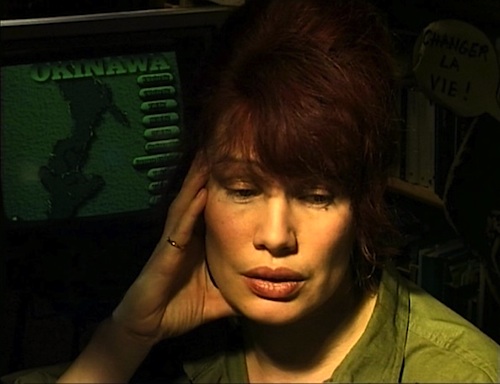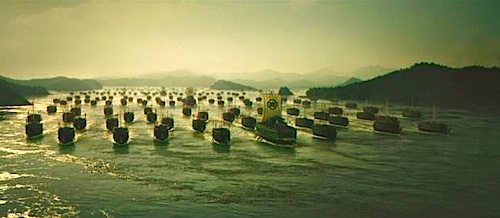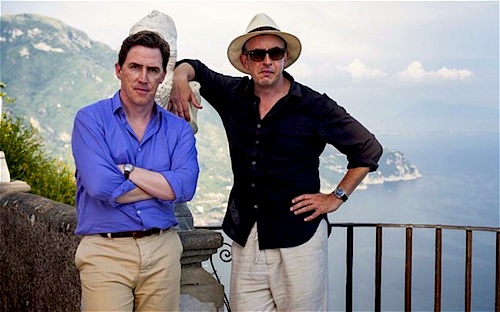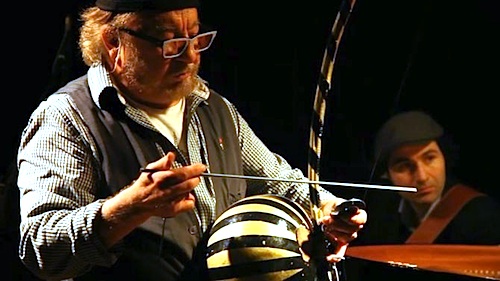By Joe Bendel. The notion that people on the internet are not necessarily whom they purport to be might have been an unsettling new notion in 1997. At that time, documentarian-essayist Chris Marker used the language of cyberpunk to inform his then latest cinematic hybrid. Technologically, its fits squarely between WarGames and The Matrix, but the aesthetic is all Marker. The ghosts of history and the digital future warily circle each other when Marker’s freshly restored Level Five finally has its premiere North American Theatrical release this Friday, as part of BAM’s Marker retrospective.
Laura is a novelist, who inherited the task of completing her late lover’s computer strategy game. Submerging herself in his work, she tries to work her way through his simulation of the Battle of Okinawa, the final Pacific Theater conflict before Hiroshima. Yet, the program refuses to recognize any of her attempts to avoid Imperial Japan’s tactical mistakes. Instead, it forces history to tragically repeat itself, chapter and verse.
Frankly, the game itself is not much of a Macguffin and it offers very little in the way of sporting engagement. It is really just a collection of talking heads to click on. Still, the commentary Marker collects is undeniably the film’s strongest material. Through interviews with filmmaker Nagisa Oshima and martial artist and Bushido authority Kenji Tokitsu, as well as the recorded testimony of Reverend Shigeaki Kinjo, Marker thoroughly critiques Imperial militarism, while still putting their kamikaze tactics in a wider historical context.
Frankly, the film makes a strong case that some of the worst Japanese war crimes were committed against their own people. Provocatively, Marker’s experts suggest (but never really prove) the military’s ferocity at Okinawa and the subsequent mass suicides and supposed mercy killings of the civilian population were intended to intimidate the Americans, but inadvertently hastened the decision to drop the atomic bomb.

There could be a good forty-five minutes of insightful analysis of the Japanese war experience in Level Five, which is not nothing. However, Laura’s long dark nights of recorded video diaries and trolling internet chatrooms are rather awkward, to put the matter diplomatically. Ordinarily, it is not fair to hold the technical shortcomings against such a fiercely idiosyncratic, anti-commercial production, but in this case the medium is at least a small part of the message. Unfortunately, Level Five’s visuals look on par with MST3K favorite Overdrawn at the Memory Bank.
Marker still had a keen eye for a disconcerting image or a revealing truth, but the attempt to capture an of-the-moment zeitgeist does not serve the film well, in retrospect. One wishes he had simply made a documentary about Kinjo and the Battle of Okinawa, but he made Level Five instead. Nevertheless, his leftist admirers have waited years to see it, so they might as well satisfy their curiosity when Level Five opens this Friday (8/15) at the BAM Rose Cinemas.
LFM GRADE: C
Posted on August 13th, 2014 at 3:04pm.


